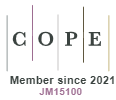Barriers in Public Communication (A Case Study of Media Dialog)
DOI:
https://doi.org/10.18778/0208-6077.51.2.12Keywords:
public communication, discourse, barriers in communication, media dialogAbstract
The purpose of the article is to investigate the causes of communication disruption at different levels of discourse. The study material consisted of conversations conducted by M. Olejnik in the TV show Prosto w oczy (Straight in the Eye). The analyzed examples are taken from the episode dealing with the sources of violence against women. The analysis showed that barriers in communication were caused by a variety of factors. Some of them such as noise, low bandwidth, code limitations, information selection, or the interlocutor’s social role can be related to the communicative situation. Others can stem from the inconsistent organization of semantic discourse at the level of the thematic organization, focus, the organization of references and rhetorical organization. In the media discourse, the rhetorical organization is the most important. The specific goals of the media cause the journalist to focus not on co-operation and agreement, but on manifesting differences and on creating dramatic conflicts through simplification and polarization of attitudes.
Downloads
References
Bugajski M., 2004, Komunikowanie i komunikowanie się w mediach, w: K. Michalewski (red.), Współczesne odmiany języka narodowego, Wydawnictwo Uniwersytetu Łódzkiego, Łódź.
Google Scholar
Dijk T.A. (red.), 2001, Dyskurs jako struktura i proces, Państwowe Wydawnictwo Naukowe, Warszawa.
Google Scholar
Goban-Klas T., 2004, Media i komunikowanie masowe, Państwowe Wydawnictwo Naukowe, Warszawa.
Google Scholar
Grabias S., 2003, Język w zachowaniach społecznych, Wydawnictwo Uniwersytetu im. Marii Curie-Skłodowskiej, Lublin.
Google Scholar
Jaeger K.H., 1976, Untersuchungen zur Klassifikation gesprochener deutscher Standardsprache, Monachium (za: Mazur J., 1986, Organizacja tekstu potocznego, Wydawnictwo Uniwersytetu im. Marii Curie-Skłodowskiej, Lublin).
Google Scholar
Kita M., 2014, Medialna moda na dialog, w: M. Kita, I. Loewe (red.), Język w mediach, Wydawnictwo Uniwersytetu Śląskiego, Katowice.
Google Scholar
Kochan M., 2005, Pojedynek na słowa, Wydawnictwo Znak, Kraków.
Google Scholar
Steciąg M., 2007, Retoryczność wywiadu a dynamika stylistyczna odmiany medialnej, w: D. Ostaszewska (red.), Gatunki mowy i ich ewolucja, t. 3: Gatunek a odmiany funkcjonalne, Wydawnictwo Gnome, Katowice.
Google Scholar
Stewart J. (red.), 2002, Mosty zamiast murów. Podręcznik komunikacji interpersonalnej, Państwowe Wydawnictwo Naukowe, Warszawa.
Google Scholar
Szkudlarek-Śmiechowicz E., 2009, Współczesna (nie)grzeczność dziennikarska, w: D. Bieńkowska, A. Lenartowicz (red.), Tajemnice rozwoju, Wydawnictwo Uniwersytetu Łódzkiego, Łódź.
Google Scholar
Szymanek K., 2004, Sztuka argumentacji. Słownik terminologiczny, Państwowe Wydawnictwo Naukowe, Warszawa.
Google Scholar
Warchala J., 1991, Dialog potoczny a tekst, Wydawnictwo Uniwersytetu Śląskiego, Katowice.
Google Scholar
Żydek-Bednarczuk U., 2004, Od rozmowy do talk show. Uwagi o telewizyjnych gatunkach mowy, w: D. Ostaszewska (red.), Gatunki mowy i ich ewolucja, t. 2: Tekst a gatunek, Wydawnictwo Uniwersytetu Śląskiego, Katowice.
Google Scholar
Downloads
Published
How to Cite
Issue
Section
License

This work is licensed under a Creative Commons Attribution-NonCommercial-NoDerivatives 4.0 International License.










